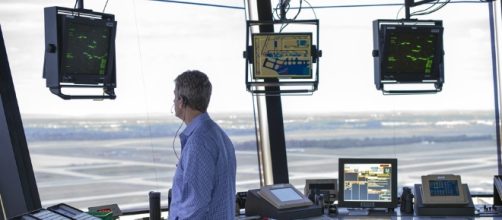As everyone knows who has flown recently, air travel can be an aggravation. Besides the occasional beat down at the hands of airline employees, cramped seating, bad food, and security check lines make flying an aggravation. One should add to those bugs in the system the inability of many airlines to adhere to a schedule. Air flight delays translate into lost hours and billions of dollars in lost revenue for business travelers, not to mention travel disruptions for people keen to get to connecting flights and family events.
President Donald Trump, as part of his infrastructure initiative, plans to do something about it by reforming the way Air Traffic Control works.
He announced his new plan at an event in the East Room of the White House.
Privatizing air traffic control
The first step in Trump’s plan will be to take the responsibility for air traffic control out of the hands of the FAA and make it into a private, self-financing nonprofit corporation. The reason for this move is that government bureaucracies have been traditionally inefficient and resistant to change as opposed to the private sector. The new corporation would subsist from fees charged to operators of aircraft, from jumbo jet airliners and small, private planes, in exchange for the service of getting them from place to place without crashing into one another.
Getting a tech upgrade
The American air traffic Control System has been undergoing a slow but steady technology upgrade.
However, air traffic is by and large still controlled by ground-based radar and radio contact between control towers and pilots. Trump, in his speech, noted that this new fangled technology called GPS had been around for quite some time. Most people have GPS on their smartphones and many in their automobiles. The military uses GPS to manage the flights of their aircraft, important where it comes to flying missions over remote areas where ground-based control doesn’t exist.
Pros and cons
The arguments for privatizing air traffic control is that it gets the service out from under the government, plagued by it is by shutdowns, the annual appropriations process, and short term thinking. A private company can raise capital, plan long term, and jump start the technology upgrades the air traffic control system really need.
The airliners are for it as well as the air traffic controller unions, being tired of working with antiquated equipment and having assurances that wages, benefits, and collective bargaining rights will be preserved.
The opposition to the privatization plan seems to come from Congress and its reluctance to give up government power. Of course, even with a private company providing air traffic control services, the FAA would still provide safety oversight,


